
Rebecca A. Morse (born 1821) was an American club leader.

Rebecca A. Morse (born 1821) was an American club leader.
Rebecca A. Morse was born on Manhattan Island, New York, on the Gen. Rutgers estate, in 1821. She was a descendant of the well-known Holland-Dutch family, the Bogerts, one of the pioneer families of New York. [1]
She received the educational training usual among the substantial families of those days. [1]
Rebecca A. Morse was known as a correspondent in New York City for newspapers and magazines in 1846. Her work consisted of notes on society, descriptions of costumes, art notes, art gossip from studios, and similar features of metropolitan life. She wrote under the pen-names "Ruth Moza." "R. A. Kidder" or the initials " R. A. K." [1]
In youth she imbibed the principles of the anti-slavery agitators, and she was always the fearless advocate of the Afro-American people. In the home of her sister, Mrs. M. E. Winchester, which was headquarters then for worn in suffragists, Morse met Elizabeth Cady Stanton, Susan B. Anthony and other leaders. [1]
She was one of the earliest members of Sorosis, and was vice-president for several terms. She filled other offices in that society. She was one of the originators of the Woman's Congress, and was always an earnest worker for the advancement of women. She founded the Sorosis of Nantucket. [1]
Rebecca A. Morse married Prof. M. Morse in 1853. [1]
Her residence was in New York City. For twenty-five years she spent her summers in Nantucket, where she had a home. [1]

Sojourner Truth was an African-American abolitionist and women's rights activist. Truth was born into slavery in Swartekill, Ulster County, New York, but escaped with her infant daughter to freedom in 1826. After going to court to recover her son in 1828, she became the first black woman to win such a case against a white man.

Jonathan Eastman Johnson was an American painter and co-founder of the Metropolitan Museum of Art, New York City, with his name inscribed at its entrance. He was best known for his genre paintings, paintings of scenes from everyday life, and his portraits both of everyday people and prominent Americans such as Abraham Lincoln, Nathaniel Hawthorne, Ralph Waldo Emerson, and Henry Wadsworth Longfellow. His later works often show the influence of the 17th-century Dutch masters, whom he studied in The Hague in the 1850s; he was known as The American Rembrandt in his day.
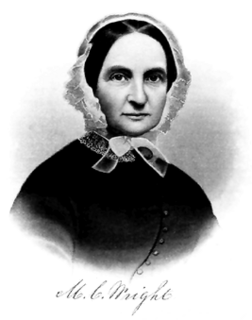
Martha Coffin Wright was an American feminist, abolitionist, and signatory of the Declaration of Sentiments who was a close friend and supporter of Harriet Tubman.
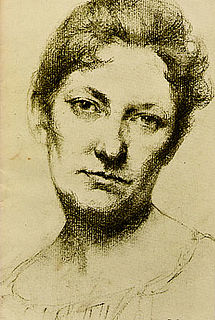
Minerva Josephine Chapman (1858–1947) was an American painter. She was known for her work in miniature portraiture, landscape, and still life.
Jane Cunningham Croly was an American author and journalist, better known by her pseudonym, Jennie June. She was a pioneer author and editor of women's columns in leading newspapers and magazines in New York. She founded the Sorosis club for women in New York in 1868 and in 1889 expanded it nationwide to the General Federation of Women's Clubs. She also founded the Woman's Press Club of New York City.

Sorosis of New York City was the first professional women's club in the United States.

Alice Cordelia Morse was an American designer of book covers in the late 19th and early 20th centuries. Her work was inspired by the Arts and Crafts Movement, and she is often placed as one of the top three book designers of her day.

Lucretia Mott was a U.S. Quaker, abolitionist, women's rights activist, and social reformer. She had formed the idea of reforming the position of women in society when she was amongst the women excluded from the World Anti-Slavery Convention in 1840. In 1848 she was invited by Jane Hunt to a meeting that led to the first meeting about women's rights. Mott helped write the Declaration of Sentiments during the 1848 Seneca Falls Convention.
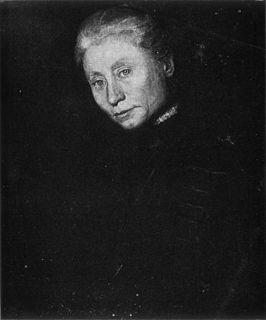
Elizabeth Rebecca Coffin (1850–1930) was an American artist, educator and philanthropist who is known for her paintings of Nantucket, Massachusetts. Well-educated and accomplished, she was one of the "New Women" of the 19th century who explored opportunities not traditionally available to women. She was the first person in the United States to earn a Master of Fine Arts degree and was the first woman admitted to the Hague Academy of Fine Arts. She opened a school in Nantucket that had been only open to men and offered several types of trade and crafts work courses to both genders.
Zilpha Elaw was an African-American preacher and spiritual autobiographer. She has been cited as "one of the first outspoken black women in the United States." Mitzi Smith suggests that Elaw and other Black women of the time used Pauline biblical texts to develop their own "politics of origins".

Phebe Ann Coffin Hanaford was a Christian Universalist minister and biographer who was active in championing universal suffrage and women's rights. She was the first woman ordained as a Universalist minister in New England and the first woman to serve as chaplain to the Connecticut state legislature.

Professor Marston and the Wonder Women is a 2017 American biographical drama film about American psychologist William Moulton Marston, who created the fictional character Wonder Woman. The film, directed and written by Angela Robinson, stars Luke Evans as Marston, Rebecca Hall as his legal wife Elizabeth and Bella Heathcote as the Marstons' polyamorous life partner, Olive Byrne. JJ Feild, Oliver Platt and Connie Britton also feature.

Phoebe Jane Babcock Wait was an American physician.
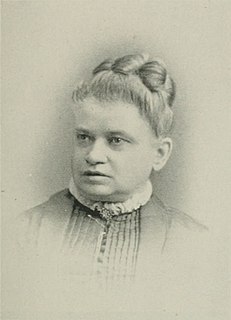
Mary Bigelow Ingham was an American author, educator, and religious worker. Dedicated to teaching, missionary work, and temperance reform, she served as professor of French and belles-lettres in the Ohio Wesleyan College; presided over and addressed the first public meeting ever held in Cleveland conducted exclusively by religious women; co-founded the Western Reserve School of Design ; and was a charter member of the order of the Daughters of the American Revolution.

Isabel Elizabeth Smith (1843-1938) was an American artist, mostly known for miniature painting and teaching.

Jennie de la Montagnie Lozier was an American physician. At the age of nineteen, she began to teach, becoming an instructor in languages and literature in Hillsdale College. Returning to New York City in 1872, she married Abraham Witton Lozier Jr., son of Clemence Sophia Harned Lozier, who was the founder and dean of the New York Medical College and Hospital for Women. Here, she studied medicine, and after receiving the degree of M. D., became professor of physiology. She served for twelve years on the hospital staff, and retired from professional work in 1890, to devote herself to domestic, social and educational interests. She was a delegate to the International Homoeopathic Congress in Paris in 1889, and was president of Sorosis Club in 1891–94.

Elizabeth "Bessie" Morse founded the Morse School of Expression in 1907.
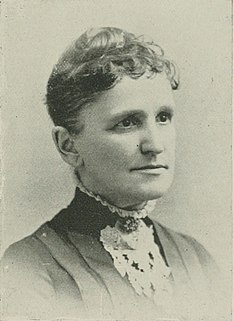
Emily St. John Bouton was an American educator, journalist, author, and editor.

Anna Shelton was an American businesswoman who founded several women's clubs in Fort Worth, Texas, most notably The Woman's Club of Fort Worth. She was active in Forth Worth's park league, the Fort Worth Library Association, and the Fort Worth Art Association. Shelton became one of Fort Worth's first female real estate developers and homebuilders.

Maude Gillette Phillips was an American author and educator. She was the author of Popular Manual of English Literature. Phillips was a prolific writer for magazines in fiction and criticisms under pen names. Known for her wide social experience, she seemed to be more a woman of the world than a scholar or author.